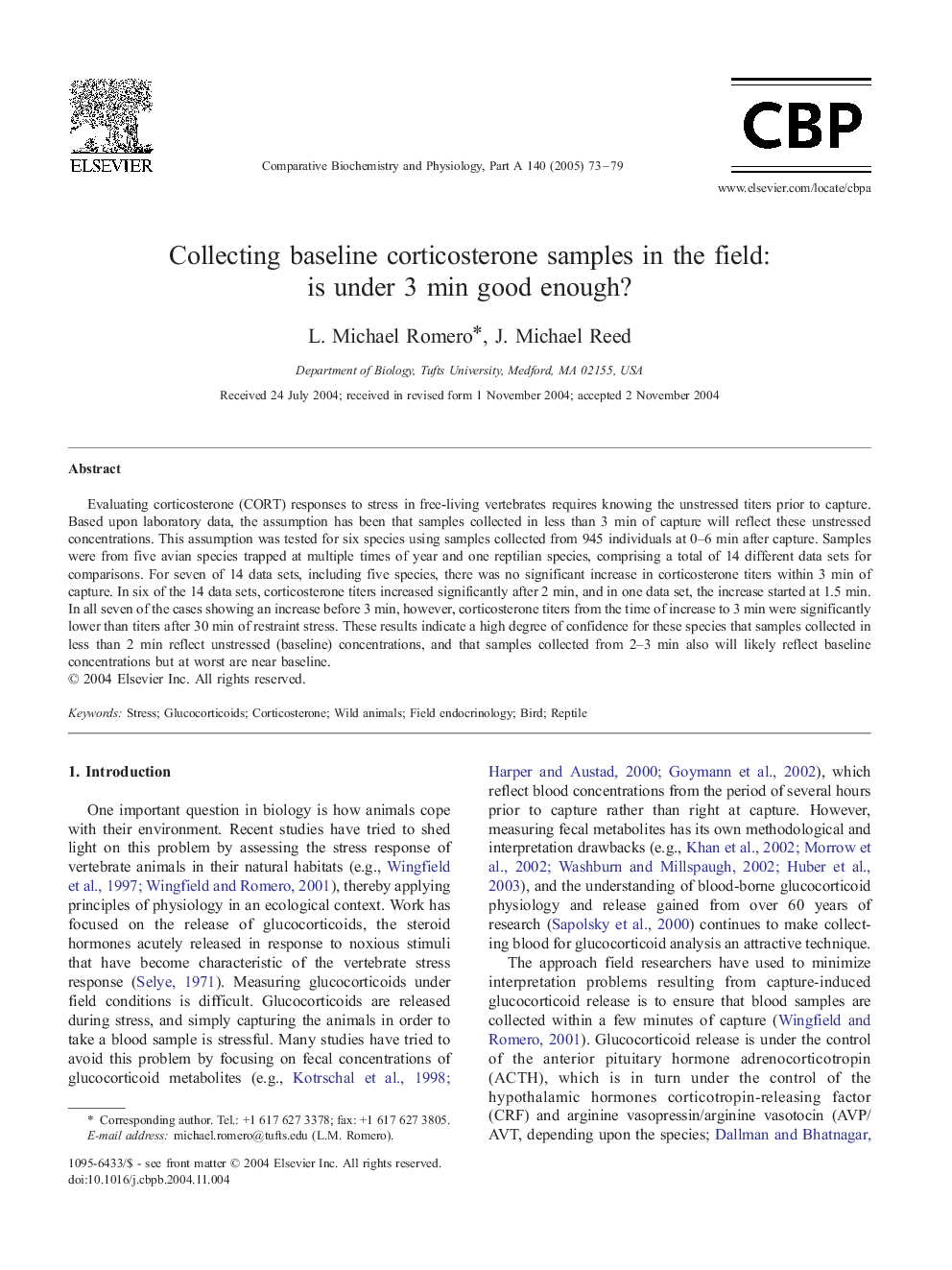| Article ID | Journal | Published Year | Pages | File Type |
|---|---|---|---|---|
| 10819234 | Comparative Biochemistry and Physiology Part A: Molecular & Integrative Physiology | 2005 | 7 Pages |
Abstract
Evaluating corticosterone (CORT) responses to stress in free-living vertebrates requires knowing the unstressed titers prior to capture. Based upon laboratory data, the assumption has been that samples collected in less than 3 min of capture will reflect these unstressed concentrations. This assumption was tested for six species using samples collected from 945 individuals at 0-6 min after capture. Samples were from five avian species trapped at multiple times of year and one reptilian species, comprising a total of 14 different data sets for comparisons. For seven of 14 data sets, including five species, there was no significant increase in corticosterone titers within 3 min of capture. In six of the 14 data sets, corticosterone titers increased significantly after 2 min, and in one data set, the increase started at 1.5 min. In all seven of the cases showing an increase before 3 min, however, corticosterone titers from the time of increase to 3 min were significantly lower than titers after 30 min of restraint stress. These results indicate a high degree of confidence for these species that samples collected in less than 2 min reflect unstressed (baseline) concentrations, and that samples collected from 2-3 min also will likely reflect baseline concentrations but at worst are near baseline.
Related Topics
Life Sciences
Biochemistry, Genetics and Molecular Biology
Biochemistry
Authors
L. Michael Romero, J. Michael Reed,
